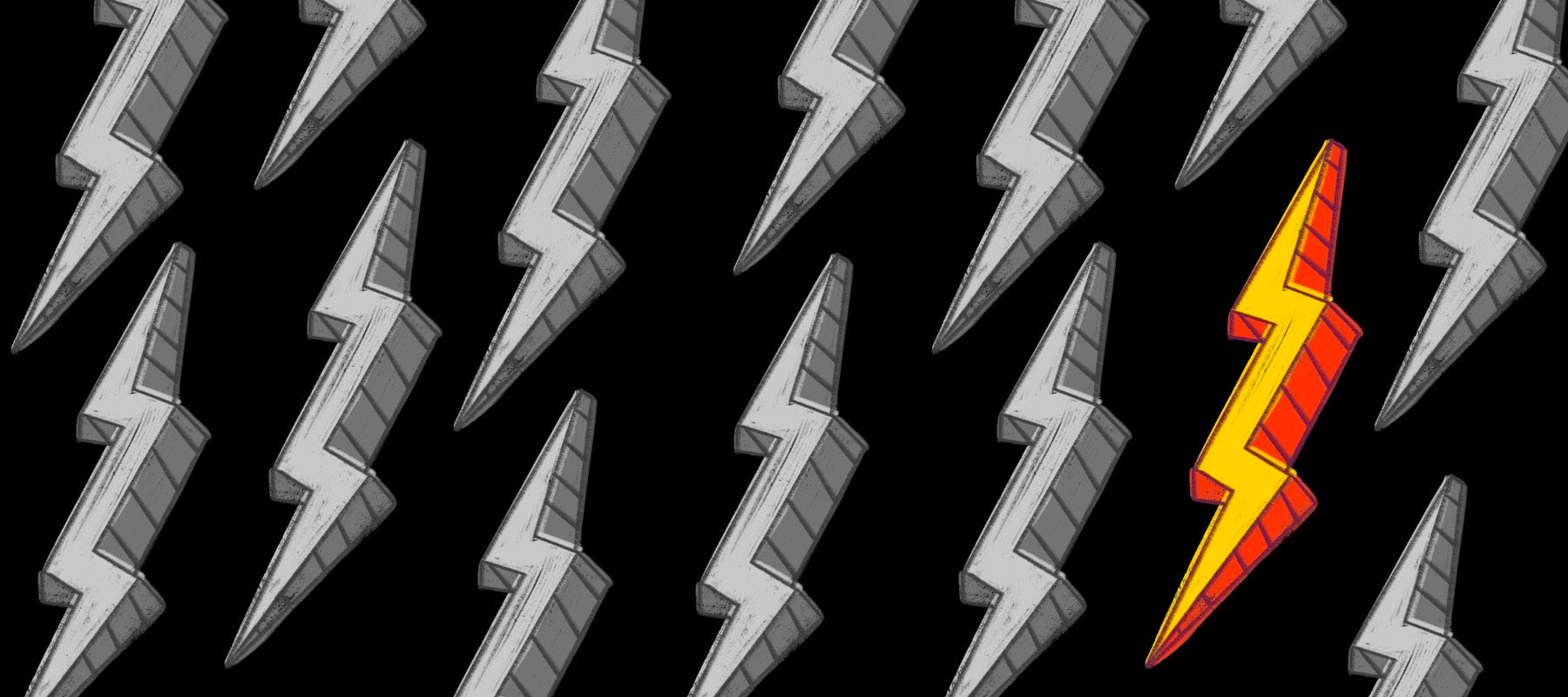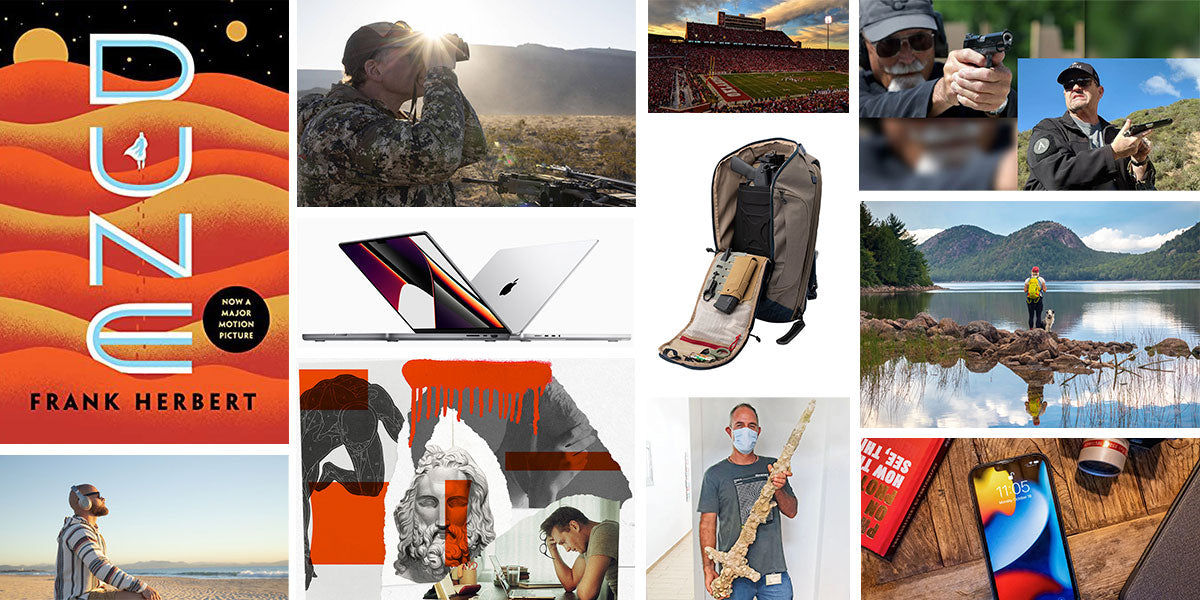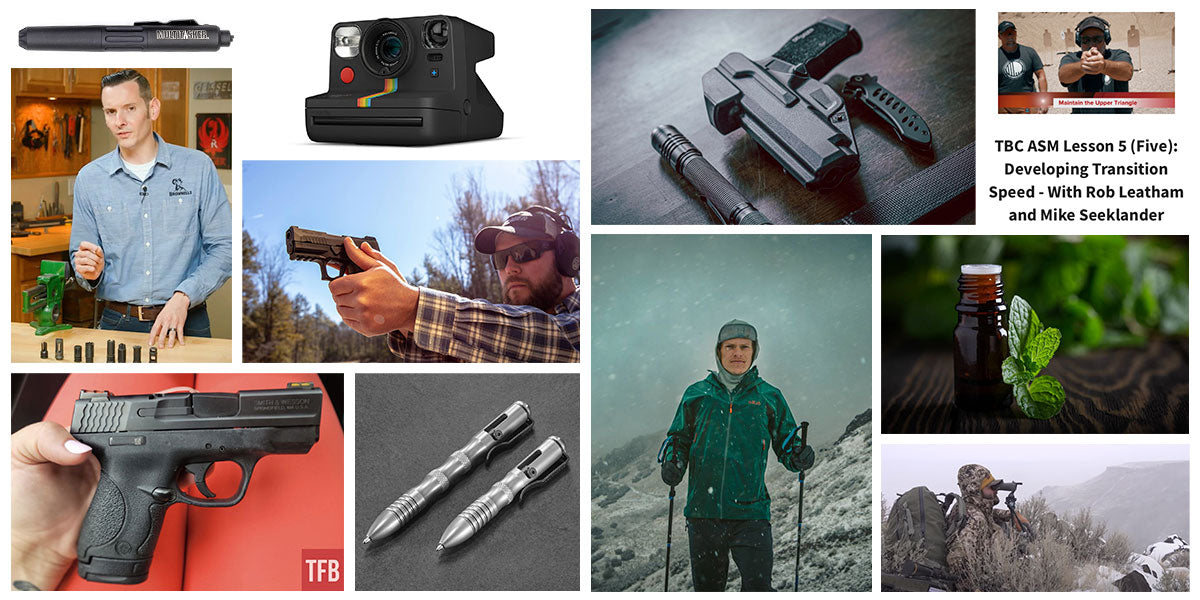
Behind the Scenes with Attention2Detail Mercantile
Earlier this month we here at U.S. Elite launched the Reignite Collection during Veteran Small Business week. Our goal with the collection is to expose you hooligans to really unique products handmade by some legit veteran small businesses.
Our first collection featured leather Bald Bros patches and a collection of 10 knives from Virginia based knife maker, Doug Esposito. The collection features 5 models of knives - the Mini Fighter, the Persian, the Karambit, the Medium Mark 1 folder, and the Large Mark 1 folder - in two different color ways. One color way for each knife is designed to be "all business" with black DLC blades and an assortment of muted, no-nonsense finishes. The other color way is "here for the party" and features satin blades, metal liners and accents, and eye catching finishes.
We caught up with Doug to get some behind the scenes info about what went into making this collection.

U.S. Elite: First of all, can you tell us a little bit about your background?
Doug Esposito: So, my military background is in the Marine Corps for 10 years as an infantry Marine. I was a West Coast guy out at Camp Pendleton and then after a bunch of deployments, finished up my last couple years out of Quantico and that's how I ended up in Virginia. My martial arts experience started with wrestling when I was about 8 and then karate and Judo at a DoJo at the end of my paper route that I trained at the whole time I was growing up. I started doing Brazilian jiu-jitsu around the time of the first UFC. Everybody saw Royce Gracie and he got us all interested in that. I continue to do Brazilian jiu-jitsu and coach and Brazilian Jiu Jitsu to this day at my gym, Vanguard Gym. When I got out of the Marine Corps, I started my training company, Complete Combative Concepts, and we started the gym as a hard skills training location to give us a brick-and-mortar presence in the in the contracting world and then had a double had the benefit of having the classes as well. We were doing CrossFit and utilizing CrossFit for conditioning so it became kind of a no-brainer to affiliate and open Crossfit Manassas about 15 years ago.
USE: After 10 years in the Marine Corp, what is one lesson from your military career that still has stuck with you to this day?
DE: The number one thing you learn in the Marine Corps is to just put up with stuff that sucks and get through it. One foot in front of the other. Even though you're doing something cool - just because I got home and you got to Jiu-Jitsu gym with a knife shop in the back, like that's amazing, you still gotta put in the work. Nobody makes my machine payments for me if I don't, nobody comes in and builds stuff if I don't, nobody teaches the class if me or the coaches don't take care of it so it's still work. Some days just putting one foot in front of the other. So, that's probably the most important lesson that I got from the military - No matter how awesome what you're doing is there's just always going to be days where it's going to suck, and you got to put one foot in front of the other.
USE: So, what got you interested in making knives?
DE: We were looking at buying a location (for the gym) and I was going to do a lot of the build-out. I did a bunch of woodworking, welding, electrical, LED lighting, signs, and things like that and I found that I really enjoyed working my hands. I had never done that before. I hadn't worked in with steel, and I have friends that were knife-makers so I figured I'd give it a try. I discovered that I enjoyed it - the history of it, the material science aspect of it, the tradition of it. There is just a lot of artistic elements, there's physics, there's math. You're learning all of the things that go into machining parts and making things.
USE: Do you see any parallels between knife making and your other passions?
DE: There's always something to learn, it's a huge rabbit hole and it's a big ocean so there's nobody that knows everything about knife-making - although some people think they do - there's always something to learn, always aspects to improve upon, so that's the exciting part of what we're doing here.
USE: How long on average does it take for you to make one of your knives?
DE: That is a really good question that I don't have a solid answer to. We never work on just one knife at a time, it's usually a batch of 3 to 6 knives. It usually takes a few weeks because we're overlapping batches and they're in different places - so that we can heat treat in batches and grind in batches, things like that. Knowing how long this takes would really help us from a business standpoint and I would like to do at some point, unfortunately I'm always innovating something or working on something new and so that takes a lot longer for the design process if I'm doing CAD and CAM and machining things and that takes longer. If I have to build fixtures that takes even longer, so any given knife can take between 8 and 20 hours depending on a lot of factors. We don't really do production and every single blade is one of a kind. We do, on average about 200 to 250 pieces a year.
USE: What types of steel do you use for your knives?
DE: We use both carbon steels and stainless steels. The consistent theme in the steels that we use is that they are all powder Metallurgy or CPM metals. The reason is because the The Crucible Particle Metallurgy process allows you to use materials with high melting points and make a superior, longer-lasting, harder steel with better properties than a non-CPM grade metal. So whether we use a tool steel such as CPM3V, M4, D2, or stainless S30V, s35VN and even the brand new magnicut they're all particle metallurgy concoctions so we can get the very best possible knife steel for you in your tools.
USE: What was your inspiration for the design of the Mini Fighter?
DE: When I first started making knives one of my first kind of projects I felt like I needed to explore the iconic shapes. The most common shapes in the Western World certainly was a fighter, a Bowie, and Tanto. I started making those shapes in 3 size: an 8 inch size small, a 10 inch medium, and 12 inch large. At some point I probably ran out of steel and didn't make them long enough or something and made some shorter ones that were a 6 1/2" overall length where the blade was more in balance with the handle. That became very easy for everyday carry - you know, a squirrel skinner, doesn't stick up too far, easy to carry in a sheath because it doesn't take up a lot of space. I like to use the Ulticlip with my sheaths. They became pretty popular and they're super easy to carry horizontal, vertical, however you want. The Mini Fighter is actually what I call a 3 finger knife. You get all the benefits of a fixed blade in a small platform that's smaller than most folders when they're open.
USE: Do you have a favorite knife from the Reignite Collection?
DE: I really enjoy them all for different reasons. I like all the ones that are kind of more more bling, you know, a little bit more of a gentleman's knife as opposed to the murdered out finishes. The Mark 1s turned out really well with Caveman grind. I love toxic fishnet finish on the Mark 1. Some of the copper and brass liners - that is something fairly unique - not a lot of people do that. I'd love to hear back from you guys what's your favorite and why.






Leave a comment
This site is protected by hCaptcha and the hCaptcha Privacy Policy and Terms of Service apply.